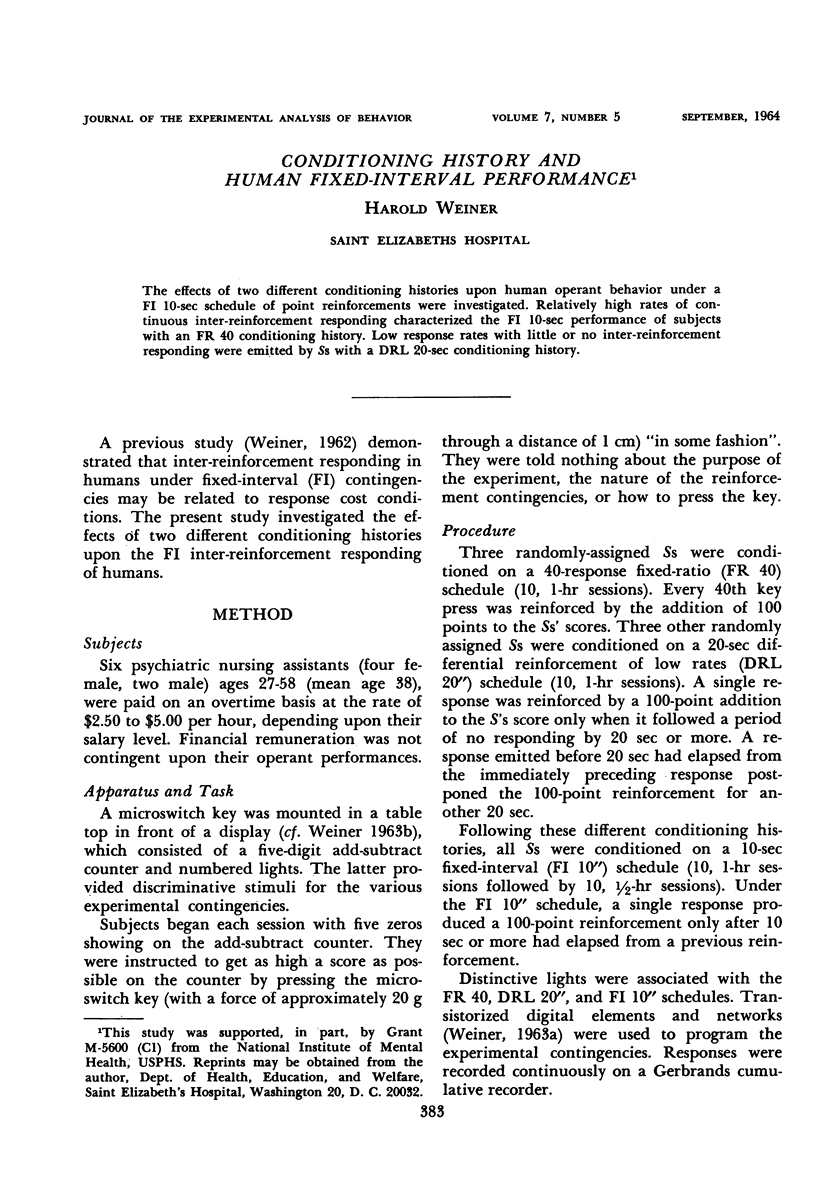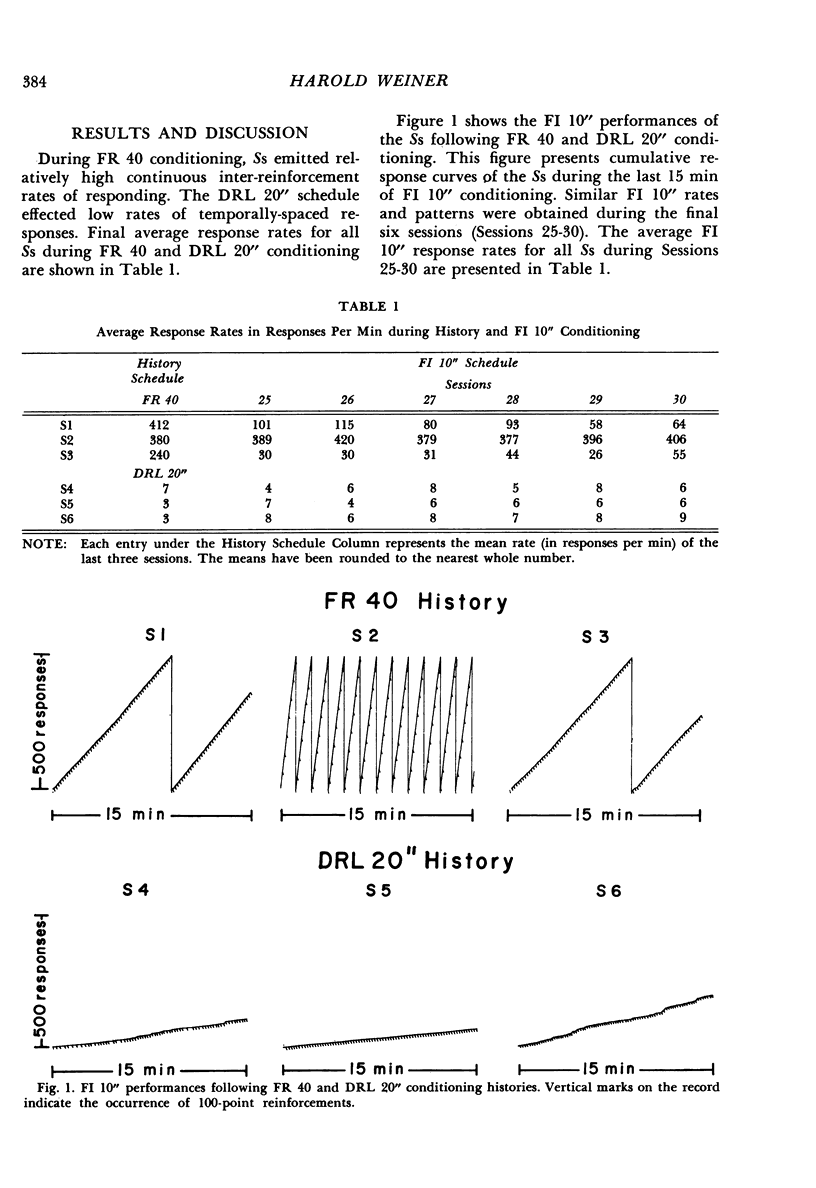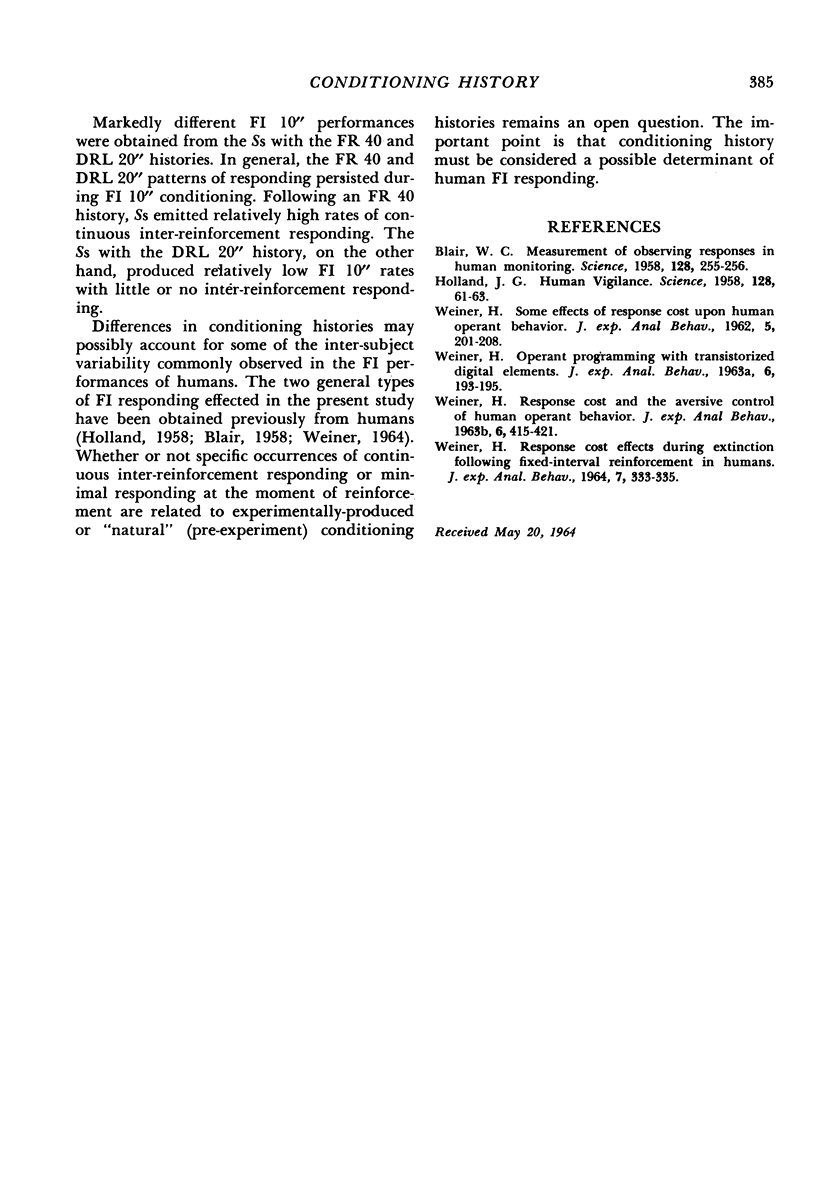Abstract
The effects of two different conditioning histories upon human operant behavior under a FI 10-sec schedule of point reinforcements were investigated. Relatively high rates of continuous inter-reinforcement responding characterized the FI 10-sec performance of subjects with an FR 40 conditioning history. Low response rates with little or no inter-reinforcement responding were emitted by Ss with a DRL 20-sec conditioning history.
Full text
PDF


Selected References
These references are in PubMed. This may not be the complete list of references from this article.
- BLAIR W. C. Measurement of observing responses in human monitoring. Science. 1958 Aug 1;128(3318):255–256. doi: 10.1126/science.128.3318.255. [DOI] [PubMed] [Google Scholar]
- HOLLAND J. G. Human vigilance: the rate of observing an instrument is controlled by the schedule of signal detections. Science. 1958 Jul 11;128(3315):61–67. doi: 10.1126/science.128.3315.61. [DOI] [PubMed] [Google Scholar]
- WEINER H. Operant programming with transistorized digital elements. J Exp Anal Behav. 1963 Apr;6:193–195. doi: 10.1901/jeab.1963.6-193. [DOI] [PMC free article] [PubMed] [Google Scholar]
- WEINER H. RESPONSE COST EFFECTS DURING EXTINCTION FOLLOWING FIXED-INTERVAL REINFORCEMENT IN HUMANS. J Exp Anal Behav. 1964 Jul;7:333–335. doi: 10.1901/jeab.1964.7-333. [DOI] [PMC free article] [PubMed] [Google Scholar]
- WEINER H. Response cost and the aversive control of human operant behavior. J Exp Anal Behav. 1963 Jul;6:415–421. doi: 10.1901/jeab.1963.6-415. [DOI] [PMC free article] [PubMed] [Google Scholar]
- WEINER H. Some effects of response cost upon human operant behavior. J Exp Anal Behav. 1962 Apr;5:201–208. doi: 10.1901/jeab.1962.5-201. [DOI] [PMC free article] [PubMed] [Google Scholar]


